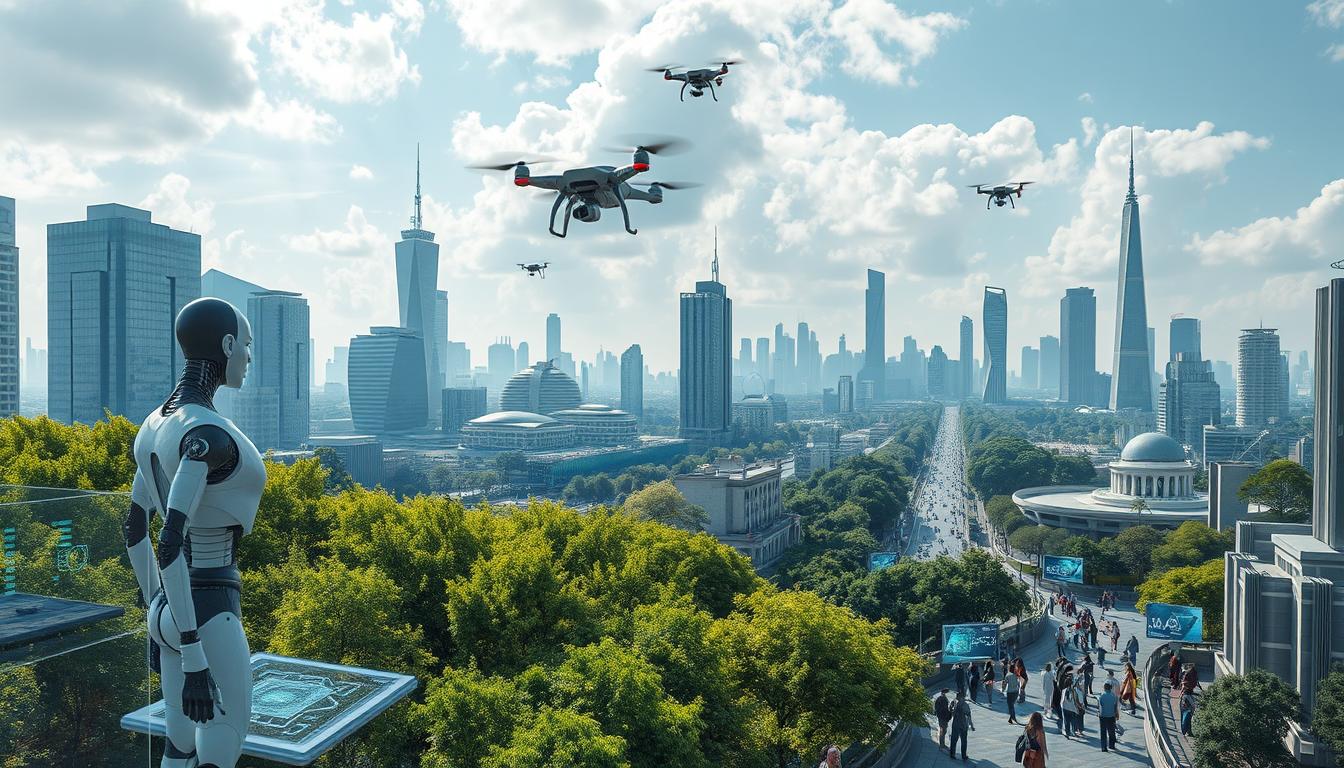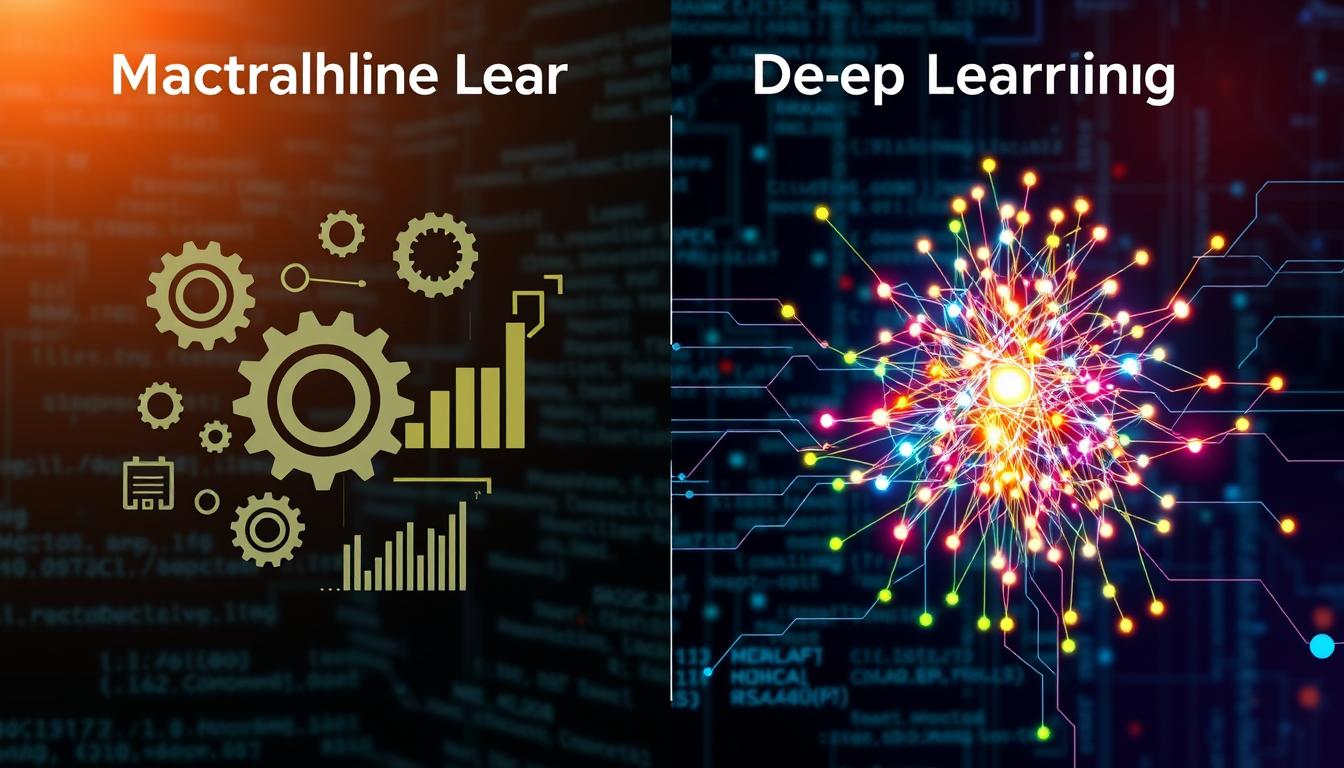Artificial intelligence (AI) is changing the cybersecurity world fast. It's bringing new ways to protect against digital threats. In 2024, AI will change how we keep our data and networks safe from cyber attacks.
This section looks at the latest in AI for cybersecurity. We'll see how machine learning, predictive analytics, and autonomous systems are fighting cyber threats. These tools are making a big difference in how we handle modern threats.
The digital world is getting more complex, and so are cyber threats. AI is key in fighting these threats. It uses machine learning and deep learning to spot and stop attacks like malware and phishing.
This section will show how AI is changing cybersecurity. It will give you a deep look at the latest AI advancements. You'll learn how AI can protect organizations in 2024 and beyond.
The Evolution of AI in Cybersecurity
AI in cybersecurity has changed a lot, moving from simple rules to advanced machine learning. This big change has changed how companies fight threats and handle security. It's made a huge difference in how they protect themselves.
From Rule-Based Systems to Machine Learning
At first, cybersecurity used rule-based systems to fight threats. These systems followed set rules to spot and stop attacks. But, as threats got more complex, these systems couldn't keep up.
AI and machine learning came in and changed everything. Now, cybersecurity is more flexible and can adapt to new threats.
Key Milestones in AI Security Development
The history of AI in cybersecurity is filled with important moments. Machine learning, like supervised and unsupervised learning, helped find complex patterns. Deep learning took it even further, making AI security better at finding threats and malware.
Current State of AI Implementation
Now, AI is leading the way in cybersecurity. Companies are using AI to improve their defenses. AI helps with predictive analytics, automated responses, and more.
As threats keep getting worse, AI will become even more important. It will help protect companies from all kinds of cyber dangers.
Understanding Modern Cyber Threats in 2024
The world of cybersecurity is always changing. New cyber threats are making life hard for companies in 2024. With more connections, hackers are getting smarter, hitting both people and businesses.
AI attacks are a big worry. Hackers use smart machines to do more harm faster. They send fake emails and spread malware, making it tough to stop them.
APTs are also a big problem. These sneaky attacks aim to stay hidden in networks for a long time. They use tricks and new bugs to get past security.
- Emerging cyber threats, such as AI-powered attacks and advanced persistent threats (APTs), are rapidly changing the threat landscape in 2024.
- Cybercriminals are leveraging AI to automate and scale their malicious activities, making it increasingly difficult to detect and mitigate these threats.
- APTs are highly targeted and stealthy attacks that are designed to infiltrate and maintain access to sensitive networks and data over an extended period.
As cybercrime keeps changing, companies must be ready. Using AI in security is key to fighting these threats. It helps keep important systems and data safe.
Machine Learning Algorithms in Threat Detection
In the fast-changing world of cybersecurity, machine learning algorithms are a key tool. They help fight modern threats with advanced AI techniques. These methods make detecting and stopping attacks faster and more accurate.
Supervised Learning Applications
Supervised learning algorithms are great at spotting known threats. They learn from lots of labeled data. This helps security teams quickly find and classify many types of attacks.
This proactive approach lets organizations stay ahead of cyber threats.
Unsupervised Learning for Anomaly Detection
Unsupervised learning algorithms are top at finding odd patterns in data. They look through huge amounts of data to find things that don't fit the usual pattern. This helps spot new threats early.
It lets security teams act fast to protect against new attacks.
Deep Learning in Pattern Recognition
Deep learning in cybersecurity takes threat detection even further. It finds complex patterns in big datasets. This helps catch new, tricky threats that were missed before.
Using deep neural networks, organizations can improve their defense against cyber threats.
As cybersecurity keeps changing, using machine learning in threat detection will become more important. Machine learning helps find and stop threats. It makes defenses stronger and keeps organizations safe from AI threats.
Predictive Analysis and Threat Prevention
In today's fast-changing cybersecurity world, predictive security and proactive defense are key. Thanks to artificial intelligence (AI), companies can spot and stop threats before they happen. They use threat intelligence and risk assessment to do this.
AI helps security teams find patterns and potential weaknesses in systems. It looks at lots of data to find early signs of threats. This lets companies act fast to reduce risks.
Adding threat intelligence makes AI security systems even better. It combines data from many places to give a full view of threats. This helps teams prepare and defend against attacks.
AI also helps with risk assessment. It shows which vulnerabilities are most important. This helps teams focus on the biggest risks and use their resources wisely.
Using predictive analysis and threat prevention, companies can move from just reacting to threats. They can be more proactive, protecting their assets and reducing the damage from breaches.
AI-Powered Incident Response Systems
AI-powered incident response systems are key in today's cybersecurity world. They use advanced tech to make the response process faster and more automated. This helps in real-time security and using AI to fight threats.
Automated Response Protocols
AI can quickly spot, analyze, and tackle security threats. It uses machine learning to find patterns and anomalies. This way, it helps organizations respond fast, reducing the damage from cyber attacks.
Real-time Threat Mitigation
AI systems can act fast to stop threats. They watch the network, analyze data, and block bad traffic. This quick action is vital in today's fast cybersecurity world.
Integration with Security Operations
AI systems work well with a company's security team. They integrate with SOAR platforms to automate many tasks. This lets security analysts focus on bigger, strategic tasks.
As more companies use AI for incident response, they'll get better at fighting cyber threats. This tech is changing how security teams work. It helps them stay ahead and protect their assets.
Neural Networks in Malware Detection
The world of cybersecurity is always changing. New ways to protect systems from malware are needed. Neural networks are a key part of this, using deep learning for malware analysis.
Neural networks are a part of AI-based antivirus technology. They are great at finding and classifying complex malware. These models learn from huge datasets of known malware, spotting things that older methods miss.
Neural networks bring many benefits to malware analysis. They can keep getting better, learning from new threats. This makes them very good at catching advanced threats and new types of malware.
Also, neural networks are experts at finding patterns. They can spot malicious code in new malware samples. This is a big win, helping security teams stay ahead of hackers and protect against zero-day attacks.
AI in Cloud Security Infrastructure
Cloud adoption is growing fast, making security a big concern. Luckily, AI is changing cloud security for the better. It helps protect different cloud setups with its advanced tools.
Cloud-Native Security Solutions
Cloud-native apps are hard to secure because of their design. AI uses machine learning to spot threats and fix them fast. It keeps an eye on cloud activity to protect data and apps.
Hybrid Environment Protection
Hybrid clouds mix on-premises and public cloud setups, making security harder. AI tools help manage these complex environments. They use advanced analytics to find and stop threats across different clouds.
Containerization Security
Container tech like Docker and Kubernetes brings new security needs. AI helps find and fix container issues. It also watches how containers run and controls who can access them. This makes cloud apps safer.
AI is key in keeping cloud security up to date. It helps organizations stay ahead of threats and keep their data safe.
Autonomous Security Systems and Self-Healing Networks
Cybersecurity is changing fast, thanks to new tech like autonomous security systems and self-healing networks. These use artificial intelligence (AI) to change how we keep networks safe and strong.
AI systems can spot and fix security problems on their own, without needing people to help. They use smart learning to find oddities, stop threats, and fix networks quickly.
AI has brought in a new era of self-healing systems. Now, networks can change and fight off new cyber threats by themselves. This helps companies keep running, protect important stuff, and stay ahead of cyber attacks.
Also, AI-driven network resilience means networks can grow and stay strong against new threats. These adaptive security systems keep learning and getting better at stopping the latest cyber dangers. This makes our cybersecurity stronger and more reliable.
The need for better autonomous cybersecurity is only going to grow. Using AI in these systems will be key in the future. It will help companies make their networks more resilient and protect them from cyber threats.
Ethical Considerations and AI Governance
AI in cybersecurity is growing fast, but we must think about its ethics and governance. Data privacy, algorithmic bias, and responsible AI are key. These are essential for using AI in security in an ethical way.
Keeping data private is critical in AI ethics. Security experts must balance data use for threat detection and privacy. They need strong data rules, strict access, and data anonymization to protect information and keep trust.
It's also vital to avoid algorithmic bias. This can cause unfair outcomes and harm the trust in AI security systems. Researchers and users must check for biases, work with diverse groups, and improve their algorithms for fairness.
FAQ
What is the role of AI in modern cybersecurity?
AI is changing cybersecurity by helping detect and prevent threats. It's key in fighting new cyber attacks and malware. AI systems are vital in keeping our digital world safe.
How has the evolution of AI impacted the development of cybersecurity solutions?
AI has grown from simple rules to advanced learning. It now uses supervised, unsupervised, and deep learning. This has made threat detection faster and more accurate.
What are the most prevalent cyber threats in 2024?
In 2024, we face threats like AI attacks, APTs, and new malware. Knowing these threats helps us create better AI security solutions.
How do machine learning algorithms contribute to threat detection in cybersecurity?
Machine learning is key in threat detection. It uses supervised, unsupervised, and deep learning. These methods make detection faster and more accurate than old ways.
What is the role of AI in predictive analysis and threat prevention?
AI helps predict and prevent threats. It uses risk assessment and threat intelligence. This shifts security from reacting to preventing threats.
How does AI-powered incident response systems improve cybersecurity operations?
AI changes how we handle cyber incidents. It uses automated responses and real-time mitigation. This makes security teams more efficient and quick.
What is the significance of neural networks in malware detection?
Neural networks are great at finding malware. They can spot new threats, improving detection over traditional methods. This is crucial for keeping systems safe.
How does AI contribute to securing cloud infrastructure?
AI is vital for cloud security. It offers solutions for cloud-native and hybrid setups. This ensures cloud security is robust and adaptable.
What is the impact of autonomous security systems and self-healing networks powered by AI?
AI-powered systems can defend and heal networks on their own. This makes networks more resilient and adaptable to threats.
What are the ethical considerations and governance challenges associated with AI in cybersecurity?
AI in cybersecurity raises ethical issues like privacy and bias. It's important to balance tech advancements with ethics. This ensures AI is used responsibly in security.



